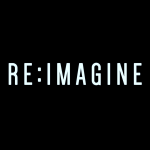Re-imagine: products, policies, digital transformation, machines vs humans
- By ssyc1
- February 27, 2020
- No Comments
 As we move into a new decade, it is worth asking broader questions like “what does our world need”?
As we move into a new decade, it is worth asking broader questions like “what does our world need”?
We’ve just sent out an investor newsletter discussing how the world will have to find a way to swing back to more productivity, innovative efficiency and sustainability.
But we also think some “re-imagination” is in order.
The “re-imagination” represented by the rise of the likes of Uber and Lyft is a clear one and is rightly called a “mobility revolution”. From the horse to the car, and now from the car to shared mobility / ride-hailing services, it is about finding and (re-)imagining (new) ways (or “form factors”) to (better) serve transportation needs. We have also in the last decade seen the re-imagination of education as MOOCs tap into a latent and under-served demand base for more updated, practical and technology-driven training courses.
The type of re-imaginations involved in developing new products and finding product-market fit entails asking good questions often of the “what if” kind. And it is both an art and a science. Finding a “product-market” fit (see also our earlier post “9 delightful things about product-market fit” on this topic) involves the art of understanding customers but also the science of asking good questions or questions at the right level. Often, customers know what they want, but don’t know how to articulate it. It is important to give customers the opportunity to bring up something you haven’t anticipated. Instead of thinking features, think of business problems where an innovation can bridge that gap. Designing for a new and superior user experience also requires a lot of “listening”, observing and understanding.
But other things – not just new products – can also benefit from re-imaginations. An interesting re-imagination of a different kind was recently undertaken by the least obvious of “re-imagination experts”, central banks, who in the last few years have started to take climate-related risks seriously and to include these into their financial system stability agenda. This rethink involves seeing climate related risks as not just specific risks but recognizing their multiple and multi-level impact on other risks in the system, so much so that the risks it poses become “systemic”. In April 2019, a groundbreaking recommendation was made by a network of the world’s major central banks to integrate climate-related risks into financial stability monitoring. (This re-imagination by central banks can also be seen as part of a “systems thinking” effort by those building the “clean” and “sustainability”-focused industries; we discuss the importance of “systems thinking” when building a new industry in this earlier post.)
Will more machine learning and more sophisticated analyses get us there? Sure, better tools will help – even though, as a founder-CEO in the edge computing space recently shared, neural nets are bad at dealing with new things that it has never seen and especially at communicating “I don’t know”. In a similar vein, a recent Harvard Business Review article headlines “humans are strategic, machines are tactical“, while a recent McKinsey Briefing “Soft skills for a hard world” highlights how the higher the level of automation, the greater the gap in “soft skills”, including in particular, problem solving, creative thinking, innovation, the ability to deal with complexity and ambiguity, and communication.
But not only do we need more re-imaginings, we need better re-imaginings.
Being in the VC business means I am in a privileged position of spending time with founders and entrepreneurs who have new ideas and who “re-imagine” and find new ways of “delighting” customers (borrowing from Jeff Bezos). I am also reminded of the human element required as I remember a conference in September 2018 with a discussion titled “re-imagine, not re-engineer”, where there was a great comment from Anand Mahindra, Chairman of the Mahindra Group, about there being an accident in a tunnel in South Korea and how all the drivers noticed it and parked their cars on the side so as to make way for the ambulance to get through, but if the cars were autonomous, he was not sure they would, as “only human beings can do that”. As we see it, understanding purpose, asking strategic questions, making on-the-spot decisions based on new information within the context of an unusual situation, all these are still not understood or processed well by machines.
The ability to imagine and re-imagine, or creativity-related skills, continues to be very important for our future. It requires a habit and even a discipline around asking “what ifs”, and deep domain expertise tends to help improve the quality of the “what ifs”. Re-imaginations are required in many things, including reconfiguring terms of discussions, reframing debates, developing new business models, as much as coming up with new products.
I am reminded of James Dyson, inventor of the famous vacuum cleaner, who was able to revolutionise the vacuum cleaning industry because he used the insight from a completely different industry – an industrial sawmill which uses something called a cyclonic separator to remove dust from the air – and applied it to the vacuum cleaning industry, because he dared to ask and imagine if vacuum cleaners could work better without the bags. But it is not just a one-time re-imagination that is required: Dyson made 5,127 prototypes for the vacuum cleaner before he got it right. Reflecting on the key ingredients for his success, he stressed the necessity of trial and error and asking lots of what-ifs, and how the “failure” of a number of ideas led to breakthroughs in unexpected places. It is important also to be clear that creative thinking is the result of a slow, non-linear process that requires much patience!
One question to ask, as “software eats the world” and digital transformation works its way through many “traditional” industries, as we see a plethora of re-imaginations of how users, workers, consumers, and businesses can be empowered by data at work and for our everyday life (at a single touch or two on our smart phone), and as we see industry-changing ideas that re-imagine the taxi, hotel and education industries, why is it that we are having so much difficulty with some of the most established and most traditional industries like the energy industry in moving away from the “old” system?
Perhaps a few reasons:
- A lack of clarity or understanding of what the product really is about! Not too much of a surprise given that this is an industry long dominated by regulation and monopoly thinking
- Relatedly, a lack of understanding of who the customer is and what has delighted him or her, and a gap in understanding how happy he or she is. “Customer service” teams that are able to “listen” and iterate are needed; “stunted” or “deaf” or tone-deaf ones are not.
- A shortage of teams who combine and bring together an understanding of the convoluted ways in which to “get things done” and effectively (and efficiently) navigate the regulatory and policy maze with an ability to also bring a fresh “market”-driven and innovative mindset to product-market fit. We have seen a few, but we need more!
In this first quarter of the new decade, we call for more re-imaginations and more high quality re-imaginations – and that uniquely human element behind it – not only because we value great products and solutions but also because we need to find new ways to solve big problems.






Leave a Reply